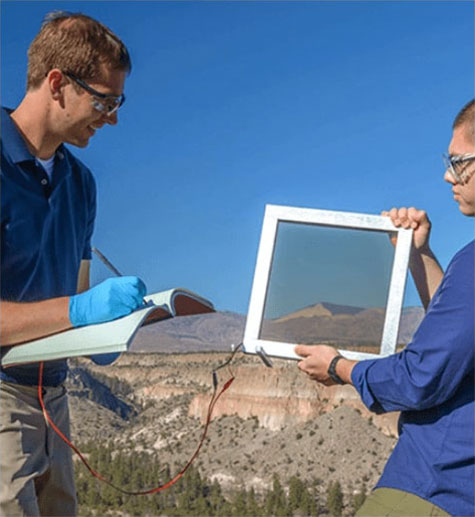Assistance page

Accelerate Technology Readiness with TRGR
TRGR: The Technology Readiness Initiative is a joint partnership between Los Alamos and Sandia national laboratories funded by the State of New Mexico. Eligible New Mexico businesses can access up to $150,000 in technical assistance from national laboratory researchers toward advancing technology closer to a commercialization milestone.
The TRGR initiative is committed to fostering the successful transition of laboratory technologies to New Mexico companies to produce high value goods and services to grow the technology-based economy.
Request Guidance


TRGR Expedites Product Development
The TRGR Initiative provides New Mexico businesses the opportunity to work directly with scientists and engineers at Los Alamos or Sandia national laboratories to accelerate their technologies past the invention stage into products and services.
- Work may include prototyping, proof-of-concept, field demonstrations & technical validation among other approved activities
- Assistance provided must NOT be available in the private sector
- Project work must be completed within 12 months from when work begins
Don’t have a CRADA or licensed IP?
Contact us to explore what CRADA or license opportunities are available. From Advanced and Intelligent Manufacturing to Sustainable Agriculture and Water expertise, Los Alamos and Sandia national laboratories are home to countless areas of expertise.

How Others Leverage TRGR
The below non-proprietary project summaries demonstrate how TRGR has helped businesses like yours succeed.
Hydrogen Fuel Cell Catalyst Analysis
Pajarito Powder is a designer/manufacturer of hydrogen fuel cell catalysts in New Mexico. Through technology readiness assistance provided at Los Alamos National Laboratory, those catalysts were observed using a suite of electrochemical evaluation and material characterization tools. The objective of this assistance, performed under a TRGR Technical Assistance Maturation Agreement (TAMA), was to assist Pajarito Powder in identifying catalyst degradation mechanisms. Following the conclusion of this TRGR project, Pajarito Powder is now utilizing project outcomes to aid their development of a new generation of fuel cell catalysts to surpass state of the art performance requirements.
Next Generation Solar Cell Deployment
mPower Technology, Inc. develops and provides solar cell technology and systems solutions for solar energy collection. Working with Sandia National Laboratories under a TRGR Technical Assistance Maturation Agreement (TAMA), mPower was able to leverage extensive modeling and analysis capabilities at the Labs and rapidly evaluate assembly and packaging options. Additional work on advanced solar cell concepts provided critical evaluation of next generation product options for high efficiency solar cells and modules. Utilizing the TRGR project results, mPower’s future activities will focus on the deployment of next generation renewable (solar) energy systems for both terrestrial and space/aerospace applications, especially in the rapidly evolving mega satellite constellations and space power generation segment.

TAMA vs. CRADA: Which is for my project?
TRGR assistance comes in two types: Cooperative Research and Development Agreement (CRADA), or Technical Assistance Maturation Agreement (TAMA). Which agreement is most appropriate will depend on the nature of your project.
A TAMA will generally be preferred for pure technical assistance. If you’ve licensed technology from the laboratory and now seek assistance validating or testing that technology as it transitions into a product, a TRGR TAMA could provide significant benefit.
A CRADA is most appropriate for collaborative work on TRGR projects. A TRGR CRADA encourages collaborative research and development between laboratory experts and the private business. Outcomes from a TRGR CRADA generally mature the technology.

TRGR Project Process
The business collaborates with the Principal Investigator (PI) & Project Manager to create a statement of work (SOW). The business and the PI must present to the TRGR review committee for funding. Either a TAMA or CRADA are implemented to begin the work. The business must also sign a Certificate of Services rendered at the completion of the projects.
STEP 1
Company Submits a statement of intent with a Project Manager, who helps to identify a PI.
STEP 2
Eligibility Screening for foreign engagement and organizational conflict of interest.
STEP 3
Business and PI submit a written proposal and present to the TRGR review panel review.
STEP 4
Execute approved TAMA or CRADA agreement, and the PI begins work on the project.
STEP 5
Upon project completion, the company receives a report and survey regarding the work.
STEP 6
The company closes out the project by signing that the assistance was completed to satisfaction.